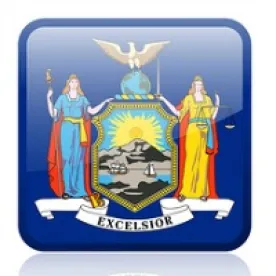In recent months, the New York State legislature has enacted amendments to the New York State Human Rights Law (“NYSHRL”) and other laws aimed at expanding protections against discrimination and harassment. The laws emphasize the need for employers to be proactive in preventing and addressing discrimination and harassment in the workplace.
The new laws went into effect in October 2019 and will continue to phase in through 2020. As this year comes to an end, employers should reevaluate their current policies, procedures and standard agreements to address the heightened risk associated with the new requirements.
I. Human Rights Law Changes as of October 11, 2019
Eliminates the requirement that harassment be “severe or pervasive” in order to be legally actionable. Previously, a plaintiff was required to establish that actionable harassing conduct was “severe or pervasive.” This high burden was the standard under federal law for decades. However, the amendments changed the current standard to conduct which simply must be worse than “petty slights or trivial inconveniences.” This change in standard significantly lowers a plaintiff’s burden when proving a hostile work environment.
Expands the prohibition on the use of non-disclosure agreements when settling all claims of discrimination. The amendments expand the prohibition on the use of non-disclosure agreements (“NDA”) when settling harassment and discrimination claims from sexual harassment to now apply to claims of discrimination based on any protected class (i.e., age, race, creed, color, national origin, sexual orientation, gender identity or expression, military status, sex, disability, predisposing genetic characteristics, familial status, marital status, and domestic violence victim status). However, there are two exceptions: (1) if it is the complainant’s preference that an NDA provision be included; and (2) the complainant is given twenty-one days to review the terms of the NDA provision and seven days to revoke the signing.
Prohibits mandatory arbitration to resolve cases of discrimination and harassment in the workplace. The law now prohibits mandatory arbitration of discrimination and harassment claims, not just claims of sexual harassment. However, this prohibition may be preempted by the Federal Arbitration Act.
Eliminates an affirmative defense previously available to employers where the employee failed to follow internal complaint reporting procedures. Under the NYSHRL, employers can no longer use the affirmative defense known as the “Faragher/Ellerth defense.” This defense was available when an employee failed to follow an employer’s complaint reporting procedures prior to filing a hostile work environment action. As a result, New York employers can now be held liable despite a complainant’s failure to follow the employer’s complaint reporting procedure.
Extends availability of punitive damages to employment discrimination actions against private employers. Prevailing plaintiffs in court actions or employment discrimination cases brought before the State Division of Human Rights can now recover punitive damages and attorneys’ fees.
Clarifies that courts should interpret the Human Rights Law “liberally” for remedial purposes, “regardless of the federal rollback of rights.”
Expands protections against all forms of discrimination in the workplace to all contractors, subcontractors, vendors, consultants, or others providing services and against all forms of discriminatory harassment to domestic workers.
II. Human Rights Law Changes for 2020
Prohibits discrimination based on an employee’s reproductive health decision making. In recent years, the list of protected characteristics under the NYSHRL has steadily expanded. An employer is now prohibited from accessing an employee’s personal information regarding the employee’s or the employee’s dependent’s reproductive health decision making, including but not limited to the decision to use or access a drug, device or medical service without the employee’s prior informed affirmative written consent. In addition, all employee handbooks must include an explanation of employees’ rights and remedies under Section 203-e of the N.Y. Labor Law.
Expands the New York State Human Rights Law to all employers within the state, regardless of the number of employees in the Company. This change will go into effect on February 8, 2020.
Extends the statute of limitations for employment-related sexual harassment claims filed with the New York State Division of Human Rights from one to three years. This change will go into effect on August 12, 2020.
III. Sexual Harassment – FAQs
New York State recently issued Frequently Asked Questions (“FAQs”) on Combating Sexual Harassment. The FAQs were released in accordance with the 2018 New York State anti-harassment laws. As of 2018, all employers in New York State are required to adopt a sexual harassment prevention policy and provide annual sexual harassment prevention training to all employees. The new FAQs serve as additional guidance and clarification for employers and employees on preventing harassment in the workplace.
According to the 2019 FAQs, an employer must now provide employees with a Sexual Harassment Prevention Notice (“the Notice”), the employer’s sexual harassment prevention policy, and training materials. It is recommended that employers provide employees with these materials at the commencement of employment. These resources may be provided in print or digitally (i.e., by e-mail). If a copy is made available on a work computer, workers must be able to print a copy for their own records.
Employers are required to provide employees with materials in both English and in an employee’s primary language if it is Spanish, Chinese, Korean, Polish, Russian, Haitian, Creole, Bengali, or Italian. New York State has made resources available for training in the above-mentioned languages. However, employers are strongly encouraged to provide a policy and training in the language spoken by employees.
The Notice also requires employers to designate a department or person to whom individuals can go with questions or to file a complaint, and to provide appropriate contact information. Employers should take the appropriate steps to ensure that the Notice and their policy, complaint form and all training materials are distributed to new employees upon hire, and to all employees when they receive their annual sexual harassment prevention training.




 />i
/>i

